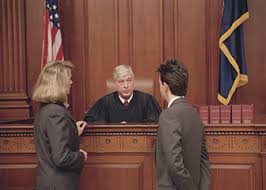
Are you are interested in learning more about what is the difference between a judge and a justice? This article will help! Attorneys, law clerks, and bailiffs all have their purpose in the court system, but the law is actually carried out when judges and justices issue their rulings on a case.
Judges and justices are court officials who make the final decision in every case that is brought to a court of law. Depending on the jurisdiction, they can sit on the bench anywhere between six to eight years. Judges and justices must retire at least by the age of 70.
Featured Schools
Judges handle local cases
Judges work in lower-level courts, such as district court and circuit court. In many states, judges have licensed attorneys who run for the public office of judges. These attorneys have successfully attended law school, passed the state’s bar examination, and have practiced law for at least five years. When a judge vacates a seat, the governor of that state appoints a replacement who will serve until the next judicial election.
In other states, judges are appointed by the governor who receives recommendations from a judicial nominating committee. Some states choose to appoint judges to avoid judicial candidates from having to raise money for their own election and risk being influenced by special interest groups.
Lower court judges preside over trials and hear oral arguments in civil cases and misdemeanor and felony criminal justice cases. Parties in those cases can appeal a judge’s decision to justices in higher courts.
Justices operate differently than judges
Justices are found on a state’s Appeals Court and Supreme Court. A higher court justice can either be elected or appointed. For instance, voters in the state of Michigan elect both appellate and Supreme Court justices. Judicial candidates must be nominated to the Supreme Court bench at either the state’s Republican Party convention, the Democratic Party convention, or by another party that has ballot status in the state of Michigan.
Conversely, in the state of Iowa, the governor appoints justices to the appeals court and the Supreme Court after considering nominees from the state’s Judicial Nominating Commission.
Unlike their counterparts in lower courts who work alone, appellate justices can consider cases in “panels,” meaning three justices can decide a case. A full court of justices may decide to join together to consider a more complex or prominent case.
Justices do not hold trials but review documentation from the lower courts before making decisions. When necessary, justices will hear oral arguments from attorneys on specific cases and will issue a written opinion at a later date. Lower court judges also issue written opinions, but there are times when they rule from the bench shortly after hearing oral arguments.
Although each state has different laws for placing justices and judges in place, it is important that these court officials render fair and equitable decisions to all parties that appear before the bench.
Related:
JOBS IN LAW ENFORCEMENT OR AS A FEDERAL AGENT
HOW LONG WILL I HAVE TO GO TO SCHOOL FOR A CRIMINAL JUSTICE DEGREE?